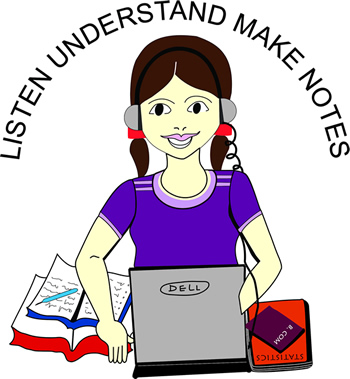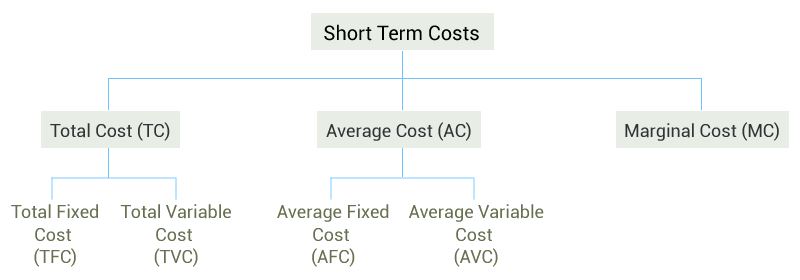Introduction to Note Taking
Many a times after you have attended a lecture, you find that you have forgotten most of the concepts covered in the lecture.
It is very likely that you understood what was taught, but still it is difficult for you to recall that. Studies
show that, 20 minutes after hearing a lecture or after reading a lesson, students forget 40% of what they had
just learned. In contrast to this, students who take notes and review them can recall up to 80% of the lecture
content. We use our skills of hearing, seeing and writing while taking down notes and that is critical for remembering
what you studied for writing an exam. However, about 35% of students still don’t believe in taking notes!
In school, we were used to copying down everything that the teacher said and nobody really taught us how to take
notes systematically. Butit is really worth the effort to take your own notes systematically during lectures. Once you begin the process, very soon you will get the hang of it, and taking notes will become second nature. Notes are your own creation, which you should write in your own words in ways which you will understand the best.
Good note-taking whether for an online course or traditional classroom is exactly the same and should be about
the quality and relevance of your notes.
Simplify your understanding
Usually, in a lecture, a lot of information is covered and it gets tough to organize all this information, process
it, analyse it and remember it again during exams. Suddenly, so much of information has to be comprehended, that
whatever was understood a while ago, also is forgotten. Information and knowledge overload can be at times too
overwhelming for the learners. But if a large chunk of information is split up into small,well organised bits,
in the form of notes and diagrams in a logical pattern, it becomes more efficient to assimilate and easier to
reproduce.
For BCOM students & CA aspirants, we have launched a new initiative of providing video lectures for different
subjects. While you are viewing the lectures, you can always pause the lecture periodically, take your notes,
and then proceed with the lecture. Also, another benefit is that you can pause it and replay if you have not
understood the concept explained.
Why should you take notes?

-
Effective note taking is an invaluable skill which will help you not only during your studentship but
also later through life. Taking notes in class and later, making your own notes at home helps you
topay attentionor ‘listen’ more effectively in all situations. Thisvital life skill of 'listening'
will be indispensable in business and other career situations even after your student days are over.
-
Good note taking skills will help you to become an active learner and take control of your own learning
without being wholly dependent on a teacher or Tutor.
-
Hence, always have your end goals in mind, listen to your instructor, and make sure to note down the
important nuggets of information that you hear or see in class.
-
If your notes are logically arranged, they will help you to figure out what is really important in a course
and act as a guide map to organize the material to suit your style of learning.
-
The process of taking notes will help you think critically and enable you to evaluate or assess course material
as well as recall and present it well during exams.
-
Students who refuse to do any note taking are missing out on excellent practice in organizing complex and
valued material to a readily understandable and recallable form.
-
Your notes will also help you for test and assignment preparation,to budget time to adequately analyze and
synthesize all the study material.
-
Notes will help you to organize your learning and you can go back and read them even after many monthstoeffectively
revise the learning and concepts.
-
If you are planning a career in accounting, then your own notes during your study days on topics such as
corporate as legal entities, limited liability, share ownership, repayment obligation, taxation etccan
be very useful to you when you are actually busy in your profession and solving more complicated and
complex problems of your esteemed clients.
So then, how do you take effective notes?
-
Read the study objectives of each lesson, and try to read as much text material as you can before
each class. At least familiarise yourself with the broad headings of each chapter before it is
taught. If you want to be really diligent then take notes before class and condense after class.
Before the class begins prepare all relevant materials like, class syllabus(specifically the
day’s topic), read the notes of the last class, and read up the section of the lesson which is
going to be taught today. This way, you are 100% prepared for your lecture and can come with
a few prepared questions.
-
Select a seat in the classroom where you can clearly see and hear the teacher, the board, and any
audio-visual materials being presented.
-
Have a separate note book or a separate section in a file for each subject and make notes only in
the relevant section for each subject.
-
Write the date of class or note taking session, specific topic, and page number in the textbook of that topic,on
the top of the notebook page.
-
Keep your text book open beside you and refer to the key topic,underline the sections covered by the teacher
or online lesson, and write only the most important points in your notebook.
-
When the teacher emphasizes on certain material, put stars on the side of it for further study. This is particularly
important for material that your teacher mentions may be in the exam.Listen and watch for any clues your
teacher gives you, like material written on the blackboard, repetition and emphasis on some study material,
summaries given at the end of class or reviews given at the beginning of the class. Put question marks
beside the section where you missed a point so that you can go home and rectify it.
- Take notes when the teacher goes over exercise and problem material, and record short summaries of discussions.
-
Leave some space at the bottom of each page for your key summary, and keep 1/4 of the pagefree in the margin
at the left, for key cues, terms and Mnemonics.When you are processing a lot of content, use highlighters
and page markers to help you find important keywords and passages of text in your notes.
-
Create your own abbreviations such as: the upward arrow for 'increasing' and the downward arrow for 'decreasing';
'> and
< ' signs for larger/ greater and smaller/ lesser; the '=' sign for equal; a rightward-pointing arrow for '
resulting in ' and leftward-pointing arrow for 'as a result of ', etc.
-
Below are a few effective notetaking systems which you might want to make use of:
- a. The Cornell System: In this method, a page is divided into 3 sections,the larger section is for general notes, the side bar is for highlighting key points, and the footer area is for summarizing.
- b. Outline System : This is an efficient system to break apart any topic, where each subject has its own outline heading with the subtopics under the main topics.
- c. Flow-Based System:The flow method uses ideas and visuals, rather than structure and sentences, for organizing, learning and recall of study material.
- Make your notes concise by writing in point form, using abbreviations and symbols. Make lists and use bullets; underline or circle important keywords. You should create a set system for abbreviating the most commonly used words and word combinations like: for example (eg), because (b/c) etc.
- Outlines provided in a study guide or at the end of a chapter are helpful as reference material for making notes in your own words, but should not be copied verbatim.
-
Students who are used to studying using a computer or tablet may prefer to use a mix of writing and typing for taking notes. You should first handwrite your notes during your first class on a topic, andwhen you are reviewing and reorganizing your notes you could type them up using a computer. Some writing tools you can use for recording notes on your computer are:
- a. Evernote (PC/Mac) is the ultimate digitized note taker.
- b. Google Drive is a free tool that can help you create documents but is hosted in the cloud, so you make changes and additions to your notes from anywhere as long as you are connected to the Internet.
- Once the class is over, you should always review your notes as soon as possible. If you are taking multiple sessions every week, you should also summarize the whole week’s notes every week.
- Once your notes are made, further organise the material in the form of Time lines, Grids, Flowcharts, Graphs etc for easy assimilation and recall.

What not to do
- Don’t rely on notes made by another student. What he had in mind while making that note may not be what your takeaway is from reading it.
- Do not rely on a recording of the lesson, because then the likelihood is that you will not pay attention in class and nothing much would have registered.
- Don’t forget to write the points down. Even if you understand it when the teacher explains, you might not remember it later on.
- Do not try to be a human tape recorder and write down everything. Write down only the main points and ideas. You can always refer to your textbook for more details. If you are recording everything the teacher says or writes on the board, your note-taking becomes mindless.
- Do not change the short forms or abbreviations you have decided on from time to time. Be consistent or you will get confused by your own notes.
- Don’t have any distractions like cell phones, newspapers, etcaround that might divert your attention from the lecture or study time.
Examples of some Notes
1. Notes on Demand Vs. Price can be made as follows:
- Linear graph of Demand Vs. Price
- Demand on Y axis; Price on X axis;
- Draw the linear graph
- Draw the curved graph
- Typically as price of the good decreases, demand increases
- This phenomenon is called elasticity
- Similarly, typically as price of the good increases, demand decreases
- Elasticity = % Change in demand/% change in price
- Very elastic means that change in demand is relatively higher when the price is changed
- Inelastic means that no change in demand when the price changes
2. Notes for Formal and Informal Credit in grid format:
| Formal credit |
Informal credit |
| Includes loans from banks andcooperatives |
Includes loans from traders, moneylenders, relatives, friends, etc. |
| RBI supervises their functions of giving loans. |
No organization is there to supervise its lending activities |
| Lower rate of interest charged |
High rate of interest charged |
3. Notes with Mnemonics:
In the answer below the initials of the keywords RPREDEIISPP can be rearranged as PRIDE SIPPER. It doesn’t matter if the sequence of the points is changed. As long as one remembers what keyword the letter stands for, it is easy to remember the 11 keywords. If you have read through the text and understood it then it will be easy to write the explanation for each keyword.
Topic: Importance of Exports for a Firm (PRIDE SIPPER)
- Reputation (R)
- Optimum Production (P)
- Spreading of Risks (R)
- Export Obligation (E)
- Research and Development (D)
- Organisational Efficiency (E)
- Liberal Incentives (I)
- Liberal Imports (I)
- Economics of Scale (S)
- Keeping Alive Old Products (P)
- Higher Prices (P)
4. Notes in a Flowchart

In the answer below the initials of the keywords RPREDEIISPP can be rearranged
- Introduction to Note Taking | BLOG